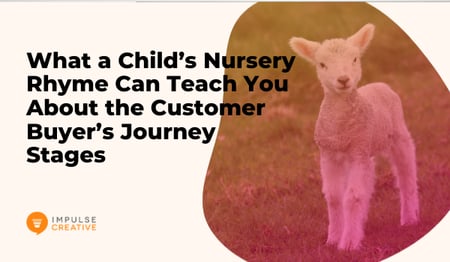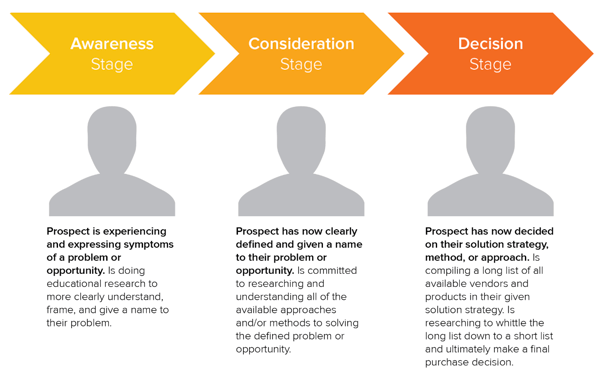What’s more frustrating than being pressured to “Buy, Buy, Buy!!”? If the very first thing a visitor gets on your website is a sales pitch, they’ll likely haul ass off your site.
Just like any relationship, a relationship with your prospects takes time to grow. In order to attract buyers, you need to slowly nurture the dynamic, gradually offering your prospects small, helpful gestures over time. Eventually, after many positive experiences with your brand, this person may come to value your help so much, they become a customer.
This path from first touch point to customer is what we call the buyer’s journey.
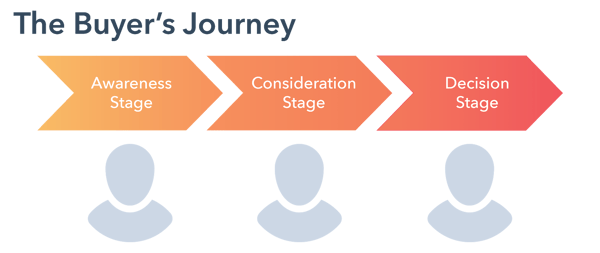
What Really is the Buyer’s Journey?
Our friends at HubSpot define the buyer's journey as “the process buyers go through to become aware of, consider and evaluate, and decide to purchase a new product or service.”
But textbook definitions are easy to read, only to think, “Wait, what? 🤔”
The buyer’s journey is the time between when someone determines they have a problem to when they solve it with your help by becoming a customer.
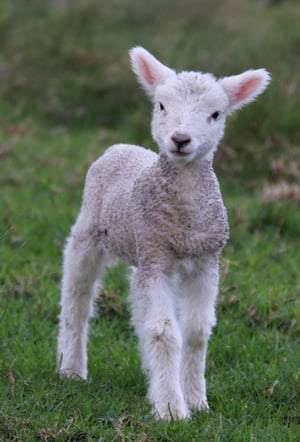 Let’s use the delightful children’s rhyme, “Mary Had a Little Lamb” as an analogy and detailed example.
Let’s use the delightful children’s rhyme, “Mary Had a Little Lamb” as an analogy and detailed example.
The journey starts from the moment Mary says, “I think I need a friend,” to when she buys a little lamb to remedy her loneliness— since as the nursery song claims, “everywhere that Mary went / the lamb was sure to go!”
You might be thinking, “what a ridiculous way to learn about the buyer’s journey,” but let’s roll with it. After all, who said learning can’t be fun? Let’s get in the mind of Mary… you’re a sheep farmer now (what a career change!) and Mary is your ideal persona (ya know, every little girl wants a lamb— obviously).
The 3 Buyer’s Journey Stages
The buyer’s journey consists of three primary stages: awareness, consideration, and decision. We’ll break each of these down, but in simple terms, here’s how each stage fits into your buyer persona Mary’s journey!
The Awareness Stage
Mary’s buyer’s journey begins the moment she realizes she’s kind of lonely. She’s been super sad being by herself lately, and she defines her problem. AKA, she becomes aware of her problem, realizing she’s been down in the dumps because she has no friends. (Poor Mary).
The Consideration Stage
After realizing she’s lonely, Mary enters into the consideration stage of the buyer’s journey. She’s already given a name to her problem and is now in problem-solving mode. Little Mary, though, is a small child and thinks like a… well, a kid! In her mind, she wants one true best friend— who is always there for her no matter what, showing her unconditional love!
Mary might start considering her options to solve her problem by going around asking adults how she might be less lonely and how to find someone who will love her no matter what. She walks up to a stranger for advice, who tells her, “just get yourself a dog, kiddo.” A dog? Hmmm. Mary’s interested. She doesn’t really like dogs that much, but maybe an animal would make a nice friend.
Later that day, she opens her children’s book on farm animals and peruses through her options there. A piglet? No, too dirty. How about a moo cow? Too big. Chicken? Too pecky. Then— suddenly— a lamb! How soft and sweet! Could a lamb be Mary’s solution?
The Decision Stage
In her farming book, Mary also realized that a fluffy alpaca or a pony may also make viable friend contenders— so she wants to meet them to see for herself! Mary decides to go to a farm herself to compare her options before making a decision.
At the farm, Mary thinks the alpaca is very cute and likes his tall stature. You as the kind farmer you are, however, warns her to “watch he doesn’t spit!” Spit? Mary didn’t think about spit. Maybe the alpaca wouldn’t be the right friend.
To the stables! The pony is very friendly, but Mary realizes the pony’s mommy is nearby and she doesn’t want to separate their family.
You lead Mary despondently to the open field where you two meet a little lamb, all by her lonesome in a pasture (just like Mary feels!). The lamb is also fluffy, and Mary loves fluffy things. Plus, the lamb takes a liking to Mary, and starts following her around the grassy knoll.
Mary has made a decision: this little lamb will follow her wherever she goes and love her unconditionally! She digs into her pocket for the money her momma gave her and pays you for her new sheep friend.
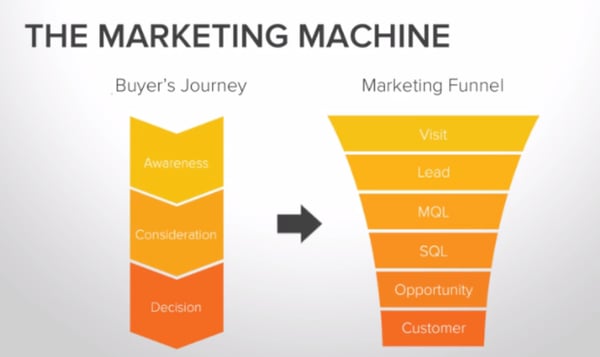
Apply the Buyer’s Journey to Your Marketing Strategy
That buyer’s journey example was fun and all, but how can you take what you’ve learned and apply it to your marketing?
You have to start thinking about your personas in terms of their individual journeys and craft content for each stage of their marketing funnel.
Step one is to develop buyer personas if you haven’t already. By understanding the motivations, desires, and pain points of your ideal customers, you can start thinking like them.
Developing Keywords for Your Persona’s Buyer’s Journey
After your buyer personas are clearly defined, you can more accurately theorize what type of queries your audience may search on Google. These are the keyword phrases they’ll look up to try and solve their problems.
As a marketing professional, you can start thinking about their searches in terms of the three buyer’s journey buckets— awareness, consideration, and decision— and how those connect with your marketing funnel labels— visitor, lead, MQL, etc. (depicted above).
From a content perspective, we call this thinking in terms of top-of-the-funnel (TOFU), middle-of-the-funnel (MOFU), and bottom-of-the-funnel (BOFU) keyword opportunities, whereas we nurse prospects down to the narrow end of the sales funnel until they become customers.
Think Like Your Buyer
In our ebook, The Comprehensive Guide to Keyword Research, we explain how the fictitious company Eco-Kitchen develops content ideas for each stage of their persona Eco-Friendly Emily’s journey based on strategic keyword research.
Eco-Kitchen focuses on promoting their eco-friendly reusable sandwich bags, coined Eco-Bags. Their persona Emily starts in her awareness stage by Google searching broad problem-solving queries like “ways to be more environmentally conscious” or “reducing food waste.”
The guide explains how she journeys from searches like this to consideration-based keywords, like “alternatives to plastic sandwich bags,” until she evolves in her solution hunt to decision-focused keywords comparing brands like “Eco-Bags vs. (competitor name) Bags.”
Download the ebook to find keywords and develop complementary content for every stage of your customers’ buyer’s journey.

